Dive watches are one of the most popular and storied type of watch, a tool in the truest sense of the word, designed to operate in the harshest of environments. In this article I will take a look at the history of dive watches, some important examples, and more generally the characteristics of what makes a dive watch a dive watch.
What is a dive watch?
Simply put, a dive watch is one designed to meet the needs of those in an aquatic or oceanic environment such as scuba divers, whether professionally or for leisure. One of the most popular watches on the market – the infamous Rolex Submariner – all but defined a benchmark aesthetic and design for what constitutes a dive watch, which has influenced many dive watch designs since.
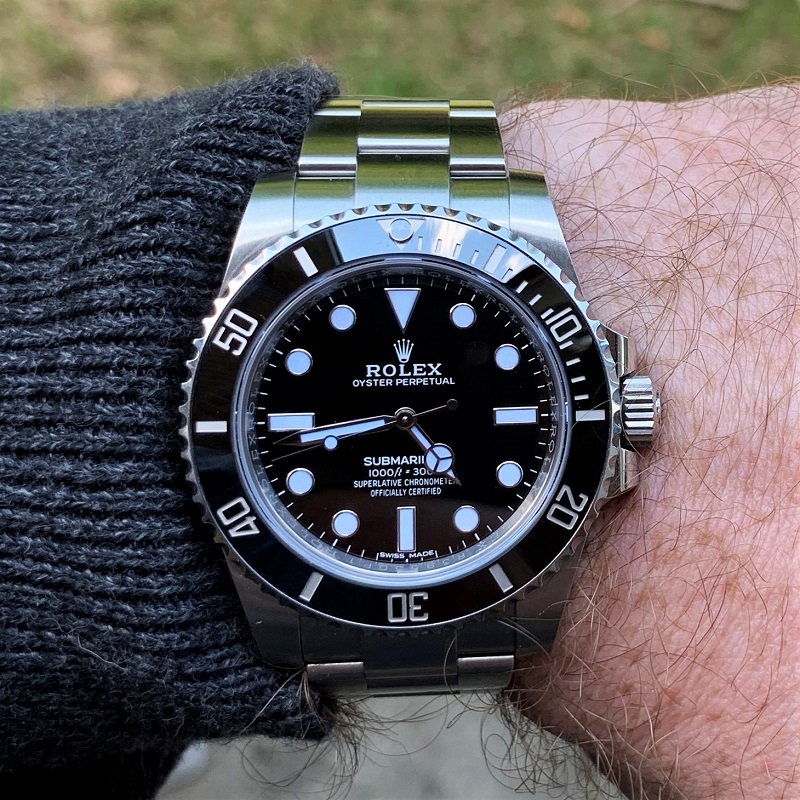
Rolex Submariner 114060-0002
However, before we dive into the common characteristics of dive watches or look at some modern examples, I think it is important to first take a look at the history of dive watches and understand where they came from.
What was the first dive watch?
As with many questions of this ilk in the watch world, the answer to this depends really on how you choose to interpret the question. Some would say the Blancpain Fifty Fathoms in 1953 is the first watch which is recognisable as a dive watch by today’s interpretation of the phrase. Others would retort asking what about the Panerai Radiomir, and some might even suggest the Omega Marine. To draw your own conclusions, let’s take a quick splash through the history of diving and watches.
The history of dive watches
The first time a watch was used by divers followed the invention of the dive helmet in 1820s by Charles and John Deane. These large copper helmets worked in the same way as early Navy divers, with a long hose attached to the helmet to provide an air supply. It was not long before some divers started placing pocket watches inside their helmets such that they would know how long they have been underwater.
As wristwatches started to come to the fore in the early part of the 19th Century, the water resistance capability of timepieces was a problem in need of solving. Cue: Rolex. In 1926, the patent was filed for a hugely important milestone in the advancement of watchmaking – the Rolex Oyster case. It marked the first waterproof watch case with a hermetic seal between the inside and outside of the case, achieved by screwing the bezel, caseback and crown against the middle case.
This was showcased with the typical Rolex marketing flare in 1927 when it was attached to Mercedes Gleitze as she swam the English Channel. After 10 hours submerged in the icy water, the Rolex watch emerged intact, still ticking and had continued to keep good time throughout the swim.
In 1932, Omega released the first commercially available dive watch, named the Marine, which featured a “double case” which was sealed with cork to provide the water resistance. This was tested under lab conditions in 1937, which ultimately certified the Marine as waterproof to a depth of 135 metres and it went on to become a hugely popular diving watch.
The Marine also introduced for the first time the concept of having an adjustable clasp for divers to ensure a good fit to their own wrists and takes the accolade for being the first rectangular wristwatch, having preceded the 1934 release of the Jaeger-LeCoultre Reverso by 2 years.
Following a specific request in 1935 from the Italian Navy for a luminescent underwater wristwatch designed for their frogmen, Panerai responded in 1936 with the first Radiomir watches, which were in fact made by Rolex for Panerai. The name Radiomir comes from the highly radioactive, radium-based substance used to provide the luminescence (this radioactive substance was eventually replaced in the 1960s by a harmless tritium-based alternative, Luminor).
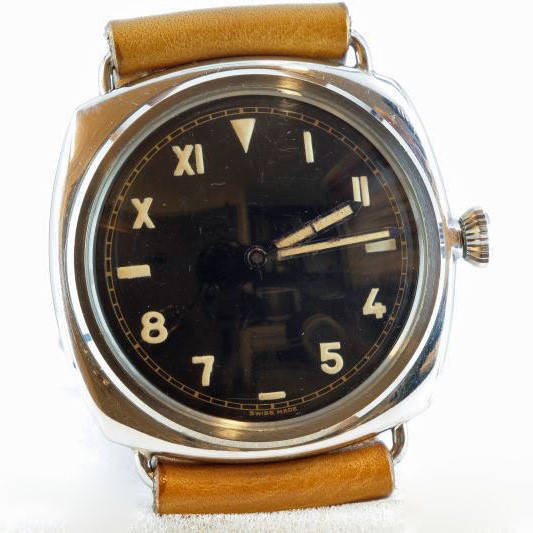
1936 Panerai Radiomir. Photo - Piero 7, Source - Wikipedia
By the 1950s, technology was evolving and water sports such as diving and underwater cinematography were growing in popularity, and this was only expedited with the advent of self-contained underwater breathing apparatus, or scuba, equipment in the 1954.
At this stage, too, there were lessons learnt from the earliest incarnations of dive watches which could be incorporated to build a better and more reliable product. In 1953 Blancpain introduced their Fifty Fathoms dive watch (you can read my Spotlight article about the Fifty Fathoms watches here) , which was soon followed in 1954 by the Rolex Submariner.
Both the Fifty Fathoms and the Submariner went on to become iconic and hugely important watches, with the Fifty Fathoms perhaps the first watch that is ‘recognisable’ as a dive watch by the aesthetics and design features we now take as a given with dive watches such as a rotating bezel. These too were followed by a multitude of other brands’ interpretation of dive watches – far too many for now, perhaps I will save that for a more encyclopaedic article in future following the research that it would warrant!
Either way, one thing which remains unquestionable is the rich history of dive watches, illustrated clearly in this potted history which itself barely even skims the surface.
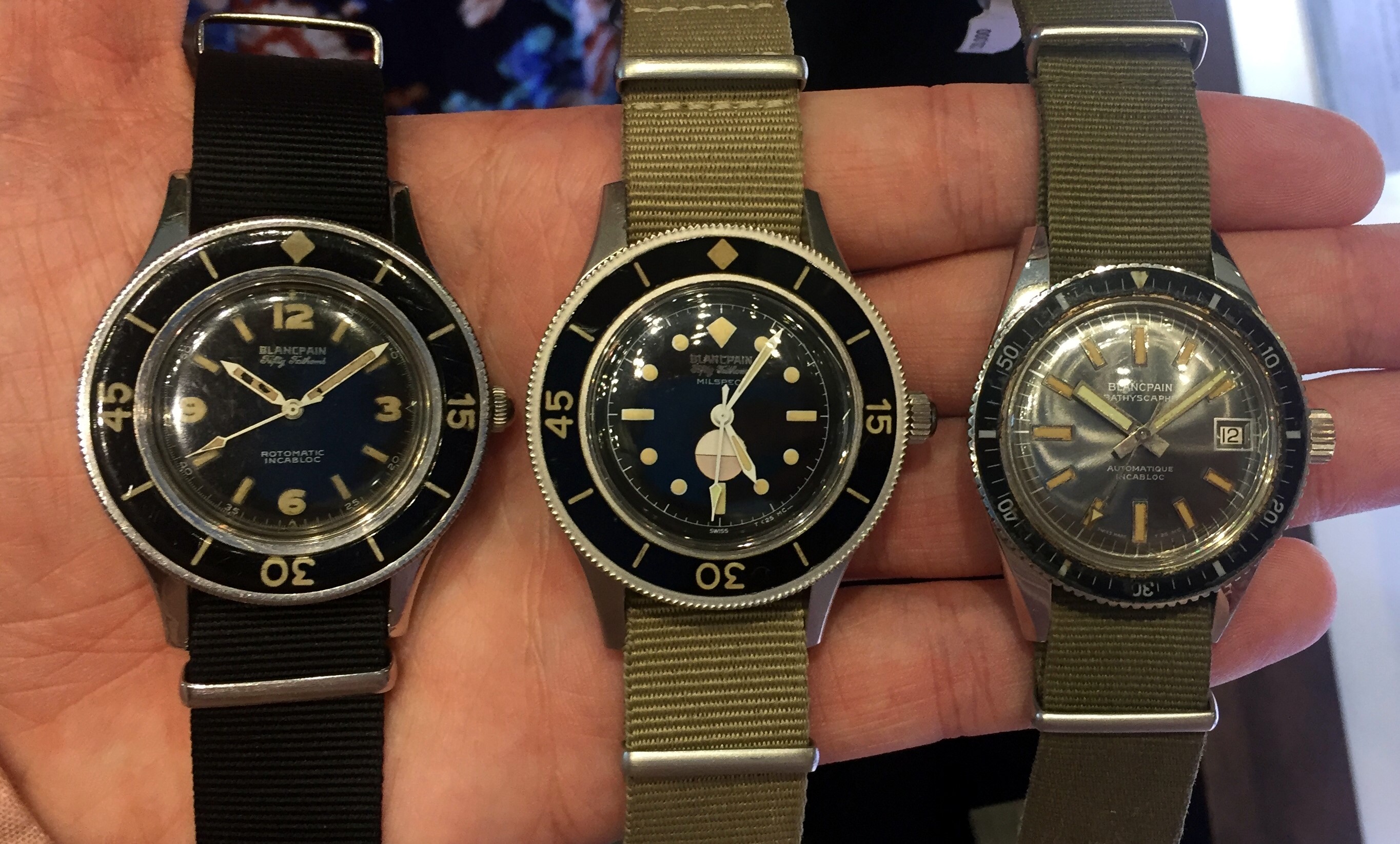
Vintage Blancpain Fifty Fathoms watches, the original Fifty Fathoms is on the left
What are the characteristics of a dive watch?
First and foremost, a dive watch is designed to be a tool watch. Whilst today there are literally countless options for dive watches across the entire price spectrum, there are some underlying characteristics which remain generally consistent. In fact, there is even an international ISO standard for dive watches, ISO 6425:2018, which defines requirements for dive watches such as water resistance, visibility and legibility, shock resistance and other facets of the watch, too.
Water resistance – of course, the most obvious requirement for a dive watch is that it must be water resistant. ISO 6425 requires a minimum rating of 100m water resistance, or 10-bar. It would be risky to take a watch rated to anything less than 100m into the water even if only for a swim, let alone underwater. Water resistance ratings don’t necessarily mean what you might reasonably assume, especially with lower ratings. You can read my article on watch water resistance ratings here.
Diving time indicator – this was the capability first introduced with the Fifty Fathoms in the form of a rotating bezel. For divers it is of the utmost importance to understand how long they have been underwater; by rotating the bezel to point the marker at the 12 o’clock to the position of the minute hand at the start of the dive, the diver is easily able to see how much time has elapsed since the start of the dive, and therefore how much air supply remains. This is obviously preferable to having to remember the time at which the dive started.
Other diving time indicators which have been employed include the mechanical alarm complication in Jaeger-LeCoultre Memovox watches, sounding a mechanical alarm at a preconfigured time, or even chronographs where the pushers are specially designed to be able to operate underwater with no water ingress into the inner watch.
Clear and distinguishable minute markers – this requirement helps to make the diving time indicator clearer and more precise. When you know the air supply longevity down to the minute, after all, it is no good if at the critical moments you cannot distinguish whether you have 2, 3 or 4 minutes remaining!
Readability in total darkness from 25cm – this was the problem first attempted to be solved by Panerai through inclusion of their Radiomir luminescent material. The intensity of sunlight decreases quickly as divers submerse themselves deeper underwater, with up to 50% of the light being absorbed within the first 10 metres of depth. This requirement ensures that even in the darkest conditions, such as night dives, the diver would be able to read the watch dial.
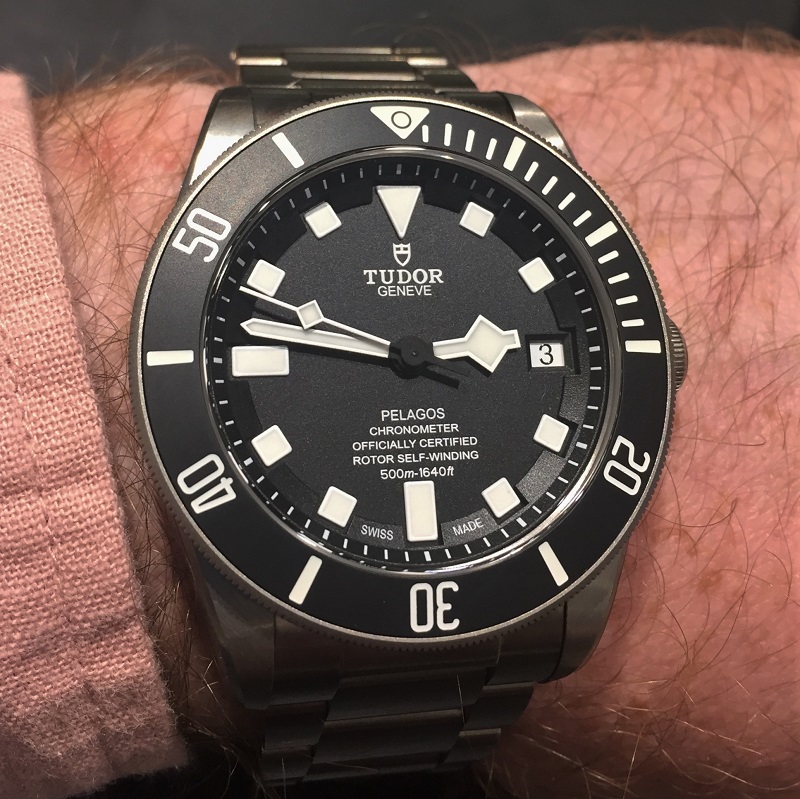
Tudor Pelagos M25600TN-0001
Dive watch strap features
Most commonly with dive watches, you will find one of two types of bracelet, or strap, with an occasional third type. Often, dive watches are fitted with metal bracelets or rubberised straps, which are most resistant to wear and tear of being worn underwater, especially with salt water, although a third option comes in the form of sailcloth straps. These are still quite hardy, however as they are fundamentally fabric-based, they aren’t quite as resistant as metal bracelets or rubber straps.
It is for this reason you don’t often see dive watches paired with leather straps, although in the modern day where a dive watch is more likely to be found “desk diving” than cruising underwater around the Great Barrier Reef, some dive watches can also look the part on a carefully chosen leather strap. In some corners of the watch community, putting a leather strap on a dive watch can be seen as a bit of a faux-pas, but personally, if you like the way your watch looks on your wrist with one, I’m all for it.
There are a few other features which can sometimes be found on dive watches. One example is micro-adjustable bracelets and straps, which enable the diver to loosen or tighten the watch fastening down the millimetre to ensure a snug fit.
An alternative to this, especially with rubberised straps, is to have a “wavy”, accordion-like section near to the lugs. The idea being that when wearing a watch over a neoprene wetsuit, you should fit the watch tightly, thus stretching out the wavy section. As you dive, and the water pressure increases on the suit, the suit itself will compress. With a regular watch strap, as the suit compresses a fixed length strap will loosen a little, however at this point the wavy section of the strap will contract, taking in any slack introduced on the strap fastening.
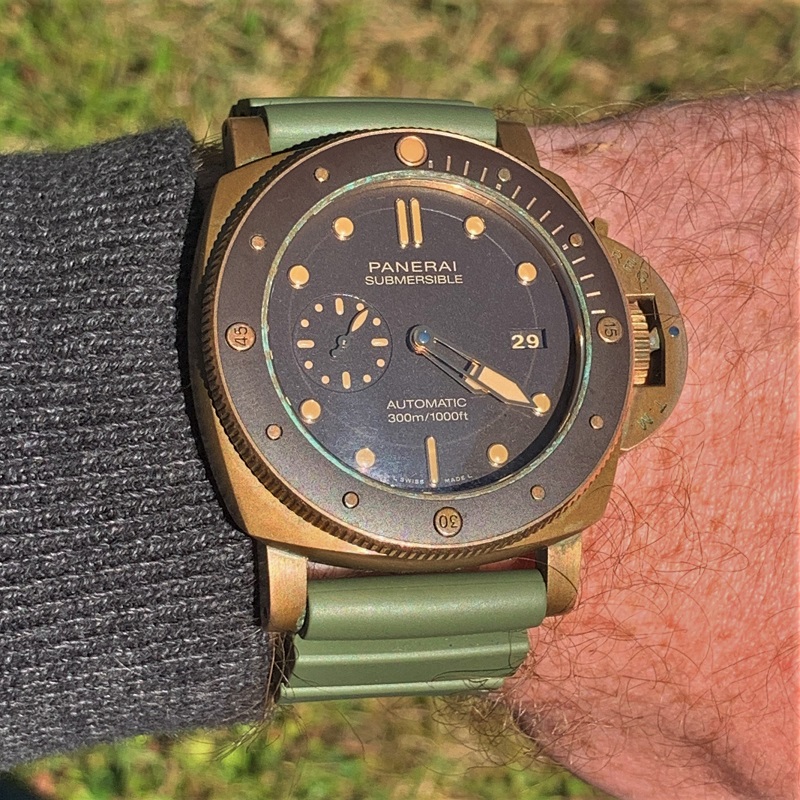
Panerai Submersible ‘Bronzo’ PAM00968, note the wavy section of the strap visible by the bottom lugs
Helium escape valves
For serious divers, and dive watches designed to be used at extreme depths or for prolonged periods such as saturation diving (where professional divers operate at great depths such as for the oil and gas industry, constructing pipes), it is possible to get watches with a helium escape valve on the side of the case. This feature is common on dive watches designed for professionals, such as the Rolex SeaDweller, and can often be misconstrued as a feature which is reserved for the best dive watches but applies equally to all.
However, this is not the case – the valve is designed to allow small helium particles to escape from within the watch case when decompressing. Helium particles are amongst the smallest of any particles and can pass through areas which water particles cannot into the watch case. When saturation divers spend prolonged periods of at great depths, they have dry, living chambers for in between dives, and it is here that helium gas is used as an alternative to nitrogen, which can have negative effects on the human body at such depths. (As a side note, if you want to learn more about saturation diving as a career, check out this article).
So, it is in fact in these living chambers that helium can seep into the inner working of the watch, and as a diver decompresses and returns to the surface, if it isn’t able to be released it can cause the watch to quite literally pop the crystal off. As such, the helium escape valve doesn’t really offer anything to regular divers beyond a valve on the side of the case!
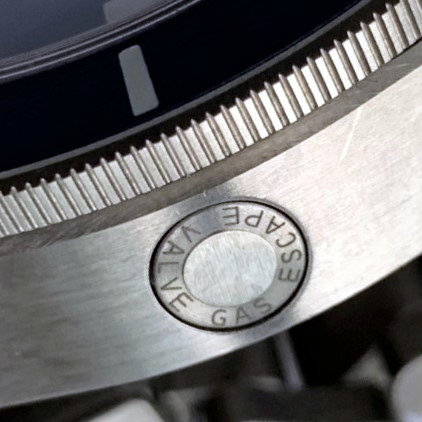
Helium escape valve on a Tudor Pelagos dive watch, photo - @tickertalker
Do divers still use mechanical dive watches?
Technology has come a long way in recent history, and today, serious divers are afforded the luxury of diving computers which they can wear on their wrist. These are obviously a lot more powerful a tool and can display all the required information clearly on screen, however it is not quite as romantic as a mechanical diving watch, and you can often find those with a diving computer on one wrist with a mechanical diving watch on the other, just in case!
Modern dive watches
Finally, let’s take a quick look at some other modern examples of popular dive watches in addition to those already featured.
The Breitling Superocean dive watch first appeared in 1957, and the photo below shows a Breitling Superocean Heritage which is inspired by these original pieces. In terms of the characteristics of a dive watch, you will notice the rubberised strap, rotating bezel with luminous hour markers, plus the larger sized hands which are also well-lumed. This piece affords the wearer up to 200 metres of water resistance and a uni-directional rotating bezel.
The Omega Seamaster Planet Ocean is a collection of pretty serious dive watches, second only in Omega’s catalogue to the PloProf. Each Planet Ocean reference affords the wearer up to 600 metres of water resistance, as well as a helium escape valve and uni-directional rotating bezel. Unusually for a dive watch, this piece also features a sapphire caseback – this is not normally something that is included as it is traditionally a decorative feature to showcase a well decorated movement, which is included at the cost of essentially weakening the case and making the overall case depth thicker. You will notice that each of the hour markers and all the hands, including the chronograph hands, are lumed to ensure visibility in the dark underwater environment.
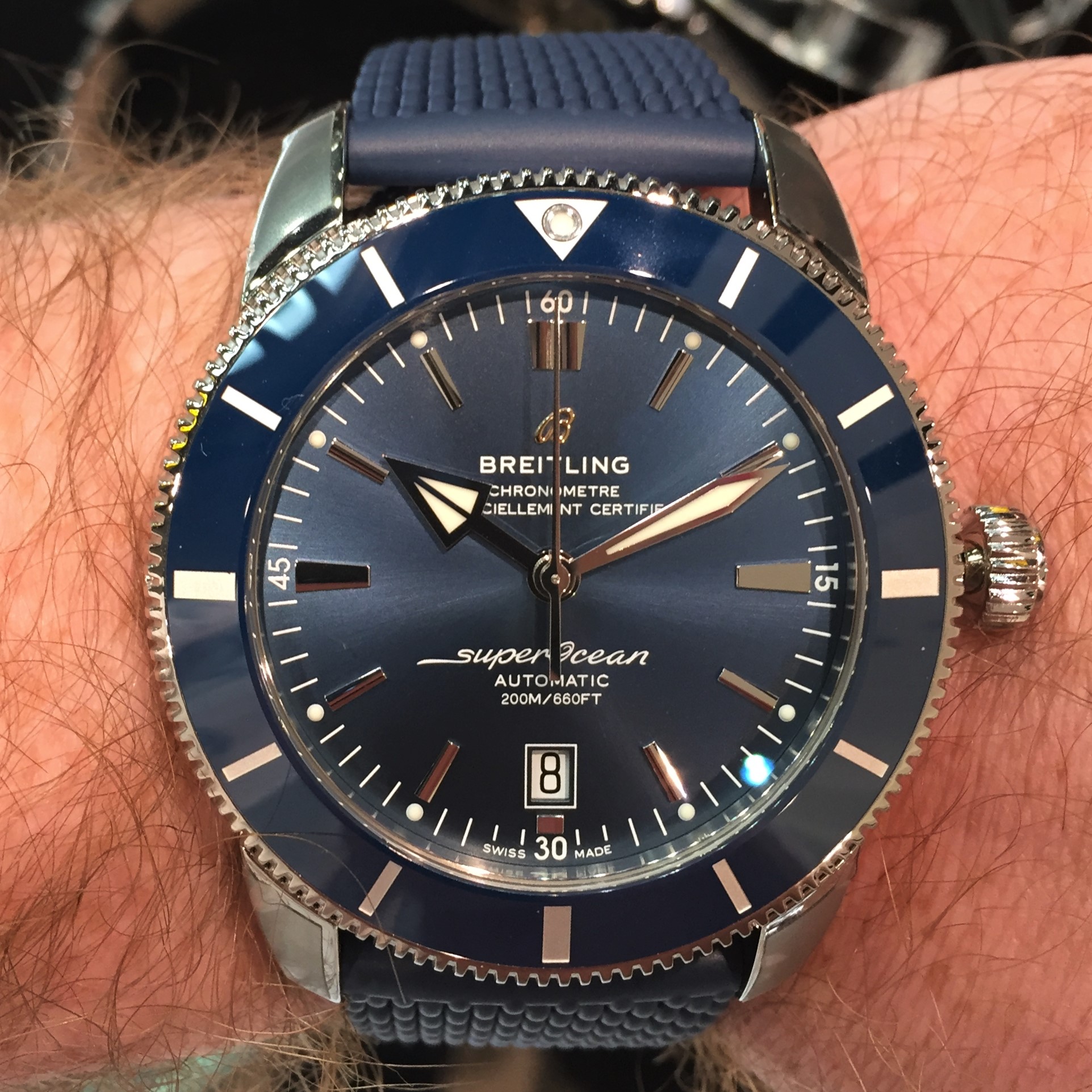
Breitling Superocean Heritage
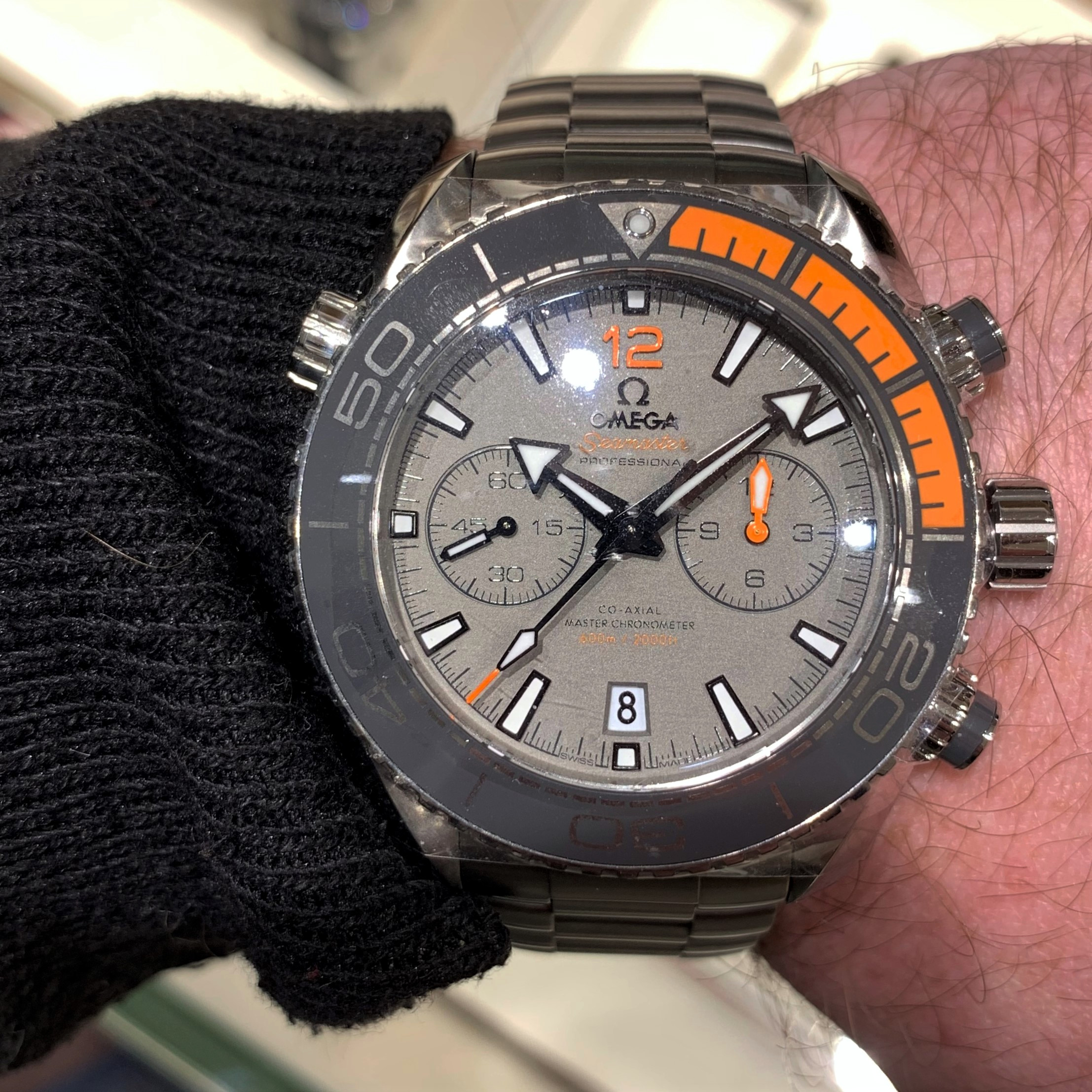
Omega Seamaster Planet Ocean
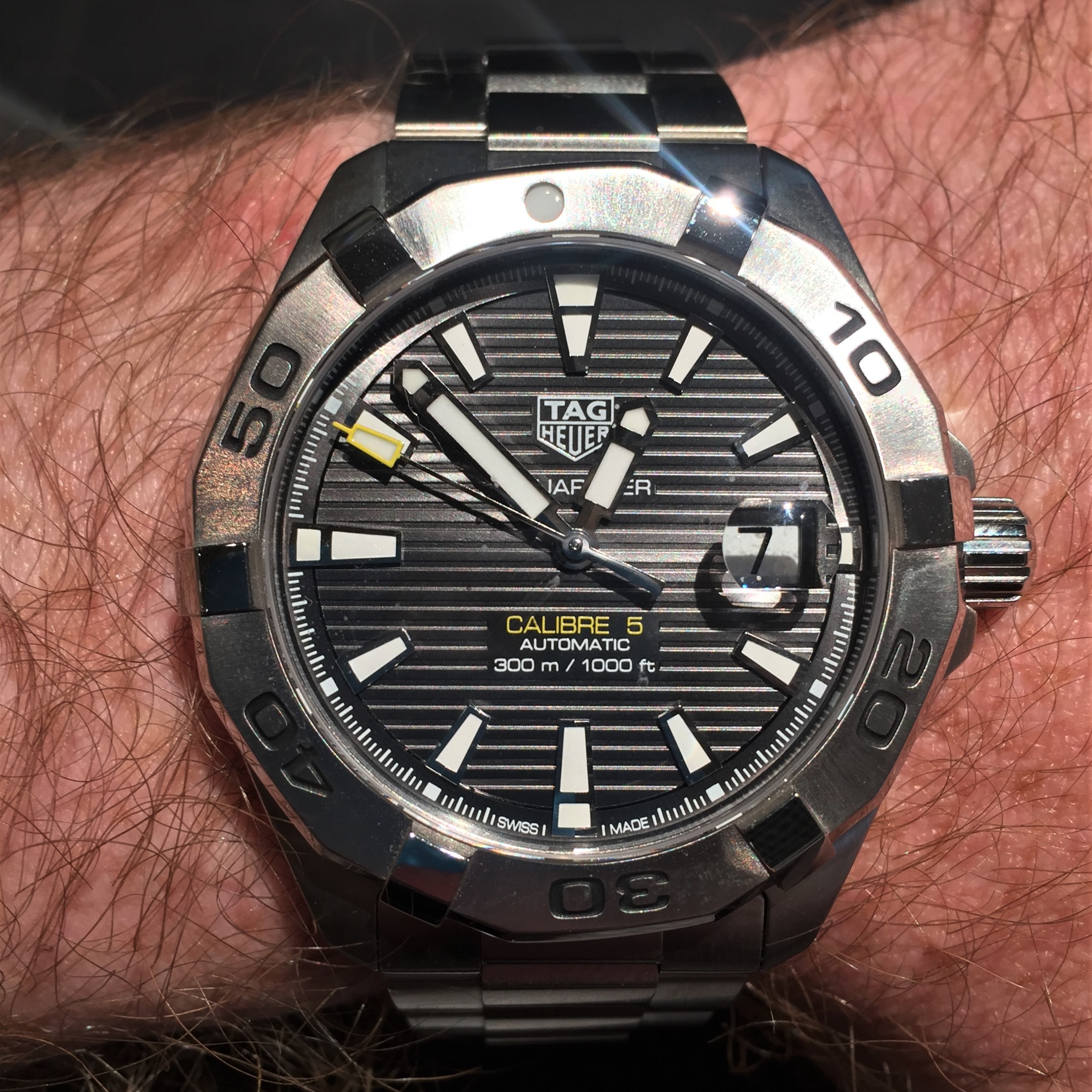
TAG Heuer Aquaracer
The Aquaracer from TAG Heuer is a hugely popular collection and it is easy to see why. The reference shown above features the automatic calibre 5 movement and offers 300 metres of water resistance alongside the staple rotating bezel. The hour markers and hands are all coated in luminescent material and designed to be legible in poor light conditions, and the seconds hand event features a yellow tip as well. As with the Seamaster, the Aquaracer is presented on a bracelet.
There is one, perhaps ‘ultimate’ mechanical dive watch which is produced by Blancpain today in exclusive numbers – the X Fathoms. This incredible watch is a whopping 55.65mm in diameter, 24mm thick, and is water resistant to 300 metres. It also includes a decompression valve, two scales displaying a depth indication based on the pressure of the water, and even a maximum depth memory indicator! There is also a 5-minute counter to help with decompression as divers rise to the surface and need to take a decompression break to avoid getting the dreaded bends. About as close to a mechanical equivalent of a dive computer that you will ever see!
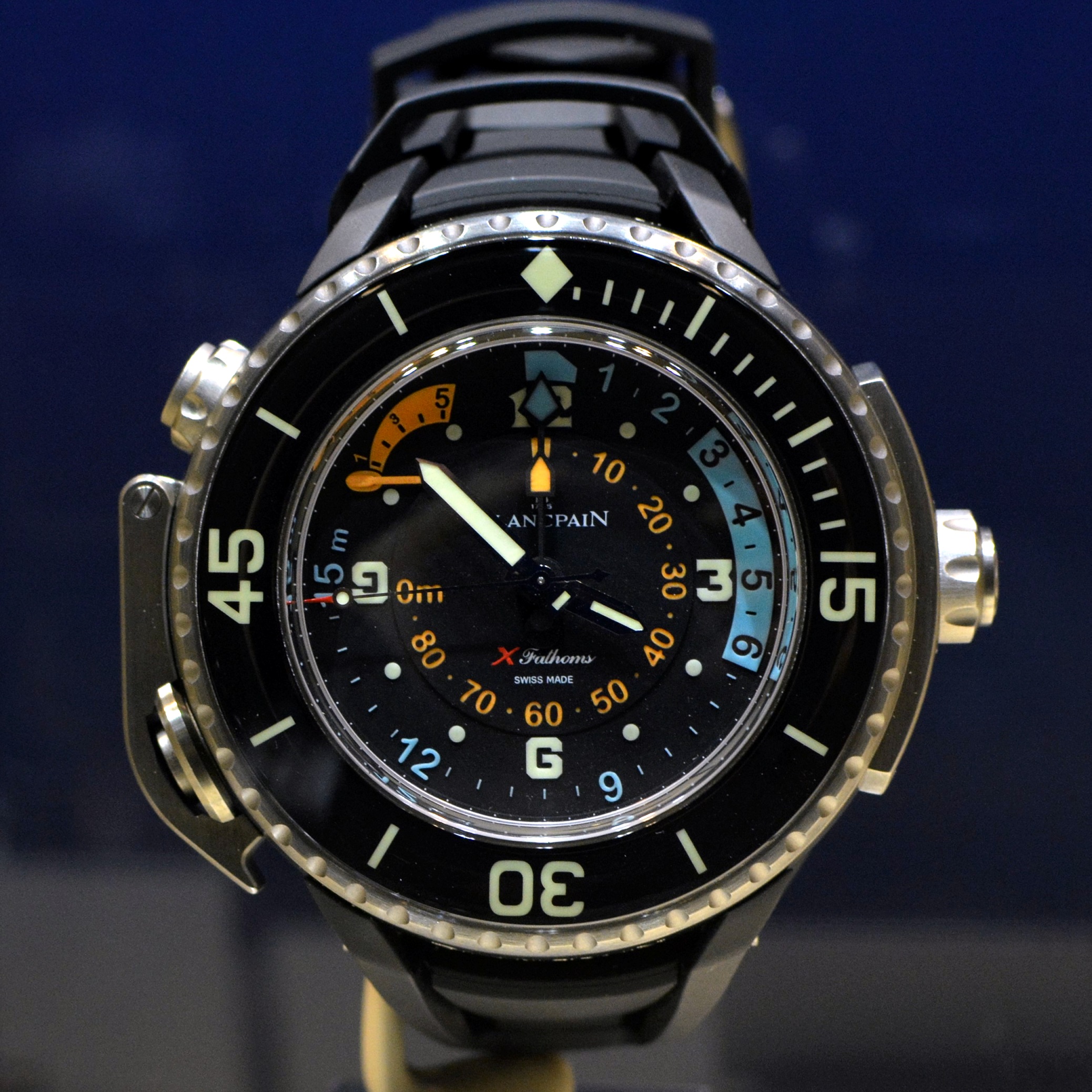
Blancpain X Fathoms
What is the deepest a dive watch has ever gone?
The million-dollar question! Between April and May in 2019, the Five Deeps Expedition complete a sonar mapping exercise of the Marianas Trench in the western Pacific Ocean, with explorer Victor Vescovo piloting a vehicle to the deepest point on planet Earth. Attached to the outside of this vehicle was Omega’s purpose built Planet Ocean Ultra Deep, which successfully survived the 12 hour mission to an astonishing 10,925 metres, or 35,843 feet – the same depth as airliners cruise in the sky!
You can read more about this extraordinary feat here.
In Summary
As I mentioned at the start of this article, there are countless options out there for dive watches, and there is sure to be one that suits every person’s style and budget out there if you’re prepared to look for it. As an introduction to what a dive watch is, and a bit of the history around them, I hope that you have found this article interesting and helpful in terms of the different characteristics to expect to see.
If you have any questions, please get in touch via our Contact page, or via our Instagram.
You might also be interested in:
- Spotlight: Blancpain Fifty Fathoms
- Water Resistance Ratings Explained
- Spotlight: Pilots Watches
- Watch Stationery and Gift Ideas
- Watch Books, Watch Boxes and more at the Watch Affinity Shop on Amazon (commissions earned)
As an Amazon Associate, I earn from qualifying purchases – thank you for your support

